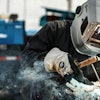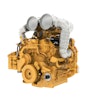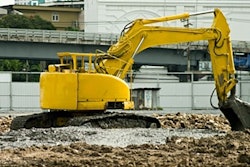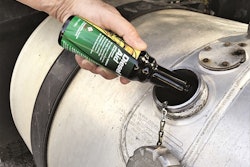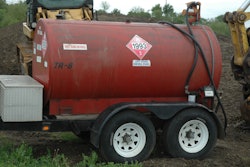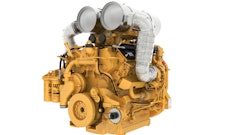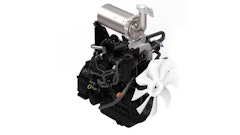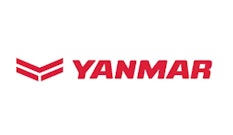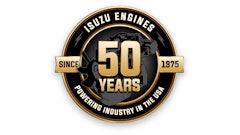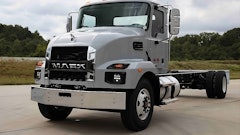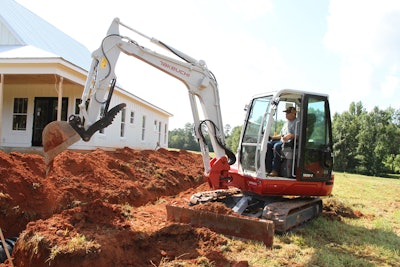
By Keith Kramlich, National Product & Training Manager, Takeuchi
High-pressure common rail fuel (HPCR) systems are standard on nearly every diesel engine today, from heavy equipment to over-the-road trucks, light-duty trucks, large generators and more. HPCR fuel systems have many advantages, but they have also caused confusion among operators. It's all too common for operators to put contaminated fuel into their machines, which has the potential to destroy the fuel system.
To ensure the engine keeps humming for hours to come, it’s important to understand the fuel systems themselves, the advantages and disadvantages, the sensitivities of the systems, the impact contaminated fuel has and warning signs to look for.
Benefits and Drawbacks
The HPCR system consists of a high-pressure fuel rail common to all the injectors. Fuel is supplied to the high-pressure fuel rail by a high-pressure supply pump. Depending on rpm and engine load, the pressure in the rail can exceed 30,000 to 40,000 psi. The injectors are electronically controlled, and each has its own firing mechanism or solenoid.
 Takeuchi equips its machines with one to two fuel filters and a water separator to help remove contaminants and water that can damage sensitive HPCR systems.
Takeuchi equips its machines with one to two fuel filters and a water separator to help remove contaminants and water that can damage sensitive HPCR systems.
Some would say the main drawback of HPCR systems is the complexity of the electrical components. There are numerous sensors, wiring harnesses and electrical components that need to be added to ensure the engine performs as it should. Another perceived negative is how sensitive these system can be to contaminated fuel.
Before Tier 4 emissions requirements, non-road diesel engines utilized a mechanical injection system. These systems were not as sensitive to contamination. Because of this, many operators are under the misconception that HPCR fuel systems are also not overly sensitive. In reality, this could not be further from the truth. Dirty or incorrect fuel, water in the fuel and air in the system can all cause damage to newer diesel engines.
The systems are highly susceptible to damage if proper care is not followed. This is because the higher the injection pressure, the tighter the tolerances must be between mating parts in fuel-handling components such as pumps, valves and injectors. Tighter tolerances make these precision surfaces extremely vulnerable to being damaged by almost anything that's not fuel. So, while a certain amount of contamination or water will not cause harm to older-design mechanical injectors, the same fuel will wreak havoc on a common rail fuel system.
Water Contamination Wreaks Havoc on Diesel Fuel Systems
The Impact of Contaminated Fuel
The most common culprit when it comes to damage is water in the fuel, which often comes from improperly maintained transfer tanks. These tanks have a few issues:
- In some cases, they rarely get drained.
- Water accumulates in the tank from condensation.
- Due to the location of the tanks and the environment service trucks are in, they can collect heavy debris. Therefore, it’s important to clean the fuel cap and surrounding area before filling the transfer tank.
- If the tank is not maintained, the water content will continue to increase and could lead to rust inside the tank and lines.
To help with this issue, equipment manufacturers include a fuel/water separator on their machines. However, it’s not a complete solution on its own. It needs to be checked and drained daily. If it isn’t and the water level reaches the top of the separator, water will be forced through the separator and back into the fuel system, reaching vital components.
Water in the fuel can impact several different aspects of the machine:
- Most often, it will decrease the lubricity of the fuel. This causes damage to the needle valve inside the injector, which will become sticky and result in high return flow or high fuel delivery.
- The needle valve can also be damaged to the point it no longer seals properly, allowing the injector tip to leak.
- Metal from the needle valve damage or from other component damage can clog the nozzles, resulting in a distorted spray pattern. This will result in fuel being sprayed directly onto the piston surface or the cylinder wall.
- Fuel directly injected into the cylinder wall will cause cylinder wash, which is when the fuel washes the lubricant oil away. The result is poor lubrication between the piston and cylinder wall, causing wear. This inevitably leads to low compression, oil dilution and engine failure.
- In some cases, free water can be pushed into the injector. Excessive heat in the injector will cause this water to turn into steam and expand, triggering a failure in the injector tip.
- Excessive heat in the injector will cause the water to turn into steam and expand, triggering a failure in the injector tip.
- Damage to the needle valve can prevent it from sealing properly when shut. This allows non-atomized fuel to leak onto the piston surface, resulting in a melted piston.
- Other contaminates, such as dust particles and low-quality diesel fuel with low lubricity properties, will damage the fuel system, as well.
 Ensuring that clean fuel is being used is the simplest and most important step to maintaining the HPCR. This includes using a trusted source that provides clean and filtered fuel.
Ensuring that clean fuel is being used is the simplest and most important step to maintaining the HPCR. This includes using a trusted source that provides clean and filtered fuel.
For all these reasons, it’s critical to maintain a clean fuel system and frequently change fuel filters. In the case of Takeuchi, every machine has one to two fuel filters and a water separator. But while very effective at removing harmful contaminants and water, fuel filters cannot work effectively if they are not serviced regularly.
Ensuring that clean fuel is being used is the simplest and most important step. This includes using a trusted source that has clean and filtered fuel. When filling, it’s also necessary to have the fill neck screen in place to prevent large debris from entering the tank. Large debris can restrict the fuel flow from the tank or, depending on the material, can break down and become small enough to cause fuel system issues.
Diesel Fuel Housekeeping Cuts Construction Equipment Downtime
Warning Signs
Most commonly, the first sign of engine failure from fuel contamination is multiple failed injectors. Though these are the same components, they operate separately and only have one thing in common: the fuel source.
If an operator starts to notice poor engine performance, excessive smoke, unnecessary regeneration requests or anything else abnormal, it is best to stop the engine before catastrophic damage occurs. The last thing a machine owner or operator wants is downtime because of failure. Some things are easily fixed, but an engine is not — a failed engine will cost a lot more than a minor work interruption.
Using clean and filtered fuel of the best quality is paramount and can save the owner thousands in repair costs along the way.
Related Content

